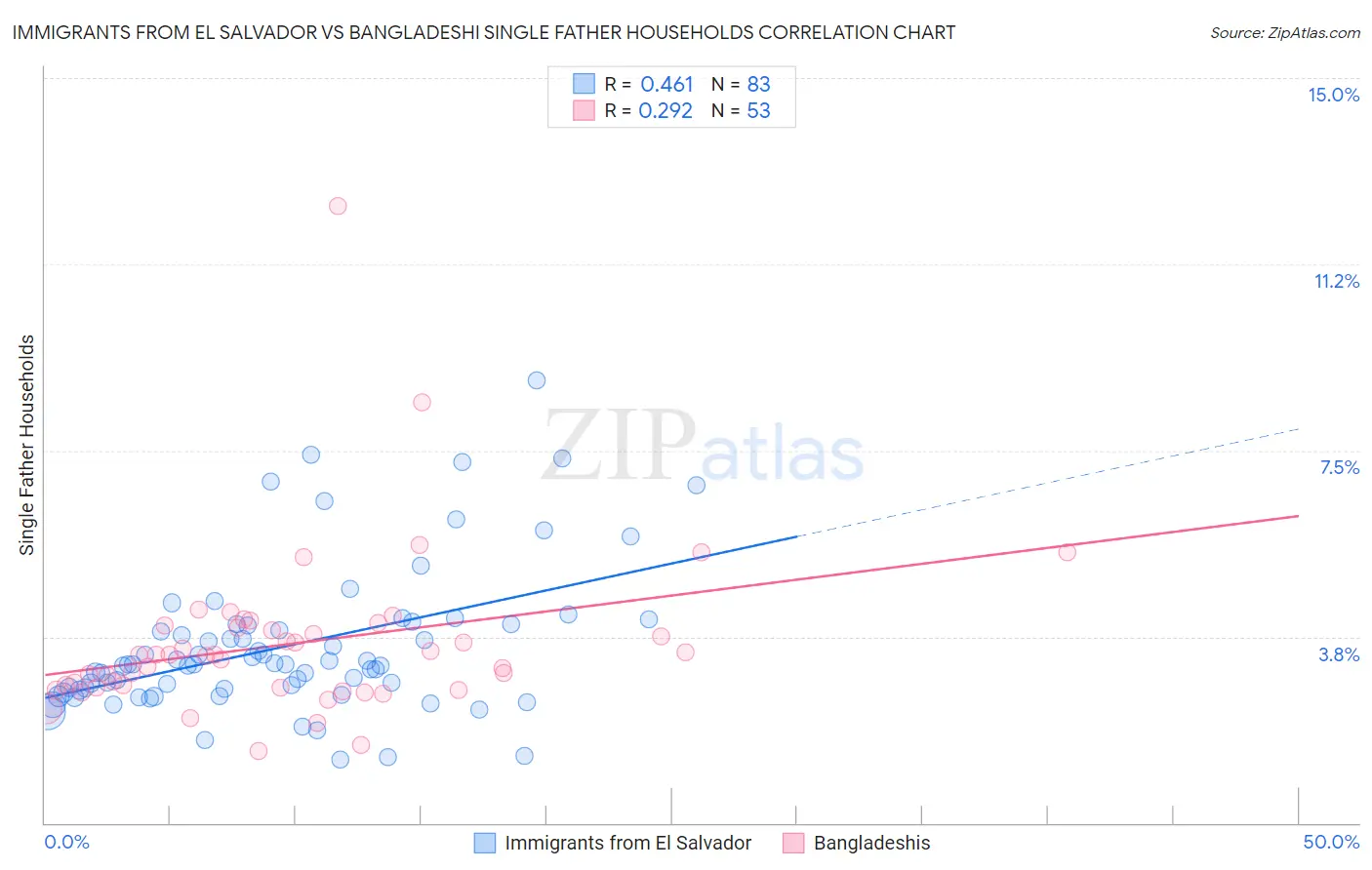Immigrants from El Salvador vs Bangladeshi Single Father Households
COMPARE
Immigrants from El Salvador
Bangladeshi
Single Father Households
Single Father Households Comparison
Immigrants from El Salvador
Bangladeshis
2.9%
SINGLE FATHER HOUSEHOLDS
0.0/ 100
METRIC RATING
317th/ 347
METRIC RANK
3.1%
SINGLE FATHER HOUSEHOLDS
0.0/ 100
METRIC RATING
327th/ 347
METRIC RANK
Immigrants from El Salvador vs Bangladeshi Single Father Households Correlation Chart
The statistical analysis conducted on geographies consisting of 355,655,401 people shows a moderate positive correlation between the proportion of Immigrants from El Salvador and percentage of single father households in the United States with a correlation coefficient (R) of 0.461 and weighted average of 2.9%. Similarly, the statistical analysis conducted on geographies consisting of 140,991,030 people shows a weak positive correlation between the proportion of Bangladeshis and percentage of single father households in the United States with a correlation coefficient (R) of 0.292 and weighted average of 3.1%, a difference of 4.3%.

Single Father Households Correlation Summary
| Measurement | Immigrants from El Salvador | Bangladeshi |
| Minimum | 1.3% | 1.4% |
| Maximum | 8.9% | 12.4% |
| Range | 7.6% | 11.0% |
| Mean | 3.6% | 3.6% |
| Median | 3.2% | 3.4% |
| Interquartile 25% (IQ1) | 2.7% | 2.7% |
| Interquartile 75% (IQ3) | 4.0% | 3.9% |
| Interquartile Range (IQR) | 1.3% | 1.2% |
| Standard Deviation (Sample) | 1.5% | 1.7% |
| Standard Deviation (Population) | 1.5% | 1.7% |
Demographics Similar to Immigrants from El Salvador and Bangladeshis by Single Father Households
In terms of single father households, the demographic groups most similar to Immigrants from El Salvador are Cape Verdean (2.9%, a difference of 0.010%), Ute (3.0%, a difference of 0.54%), Guatemalan (3.0%, a difference of 0.62%), Cheyenne (2.9%, a difference of 0.86%), and Houma (2.9%, a difference of 0.86%). Similarly, the demographic groups most similar to Bangladeshis are Immigrants from Cabo Verde (3.1%, a difference of 0.55%), Chippewa (3.1%, a difference of 0.65%), Aleut (3.0%, a difference of 0.88%), Immigrants from Mexico (3.0%, a difference of 1.1%), and Nepalese (3.1%, a difference of 1.5%).
| Demographics | Rating | Rank | Single Father Households |
| Tsimshian | 0.0 /100 | #312 | Tragic 2.9% |
| Arapaho | 0.0 /100 | #313 | Tragic 2.9% |
| Salvadorans | 0.0 /100 | #314 | Tragic 2.9% |
| Cheyenne | 0.0 /100 | #315 | Tragic 2.9% |
| Houma | 0.0 /100 | #316 | Tragic 2.9% |
| Immigrants | El Salvador | 0.0 /100 | #317 | Tragic 2.9% |
| Cape Verdeans | 0.0 /100 | #318 | Tragic 2.9% |
| Ute | 0.0 /100 | #319 | Tragic 3.0% |
| Guatemalans | 0.0 /100 | #320 | Tragic 3.0% |
| Mexicans | 0.0 /100 | #321 | Tragic 3.0% |
| Immigrants | Guatemala | 0.0 /100 | #322 | Tragic 3.0% |
| Immigrants | Central America | 0.0 /100 | #323 | Tragic 3.0% |
| Fijians | 0.0 /100 | #324 | Tragic 3.0% |
| Immigrants | Mexico | 0.0 /100 | #325 | Tragic 3.0% |
| Aleuts | 0.0 /100 | #326 | Tragic 3.0% |
| Bangladeshis | 0.0 /100 | #327 | Tragic 3.1% |
| Immigrants | Cabo Verde | 0.0 /100 | #328 | Tragic 3.1% |
| Chippewa | 0.0 /100 | #329 | Tragic 3.1% |
| Nepalese | 0.0 /100 | #330 | Tragic 3.1% |
| Navajo | 0.0 /100 | #331 | Tragic 3.2% |
| Yaqui | 0.0 /100 | #332 | Tragic 3.2% |